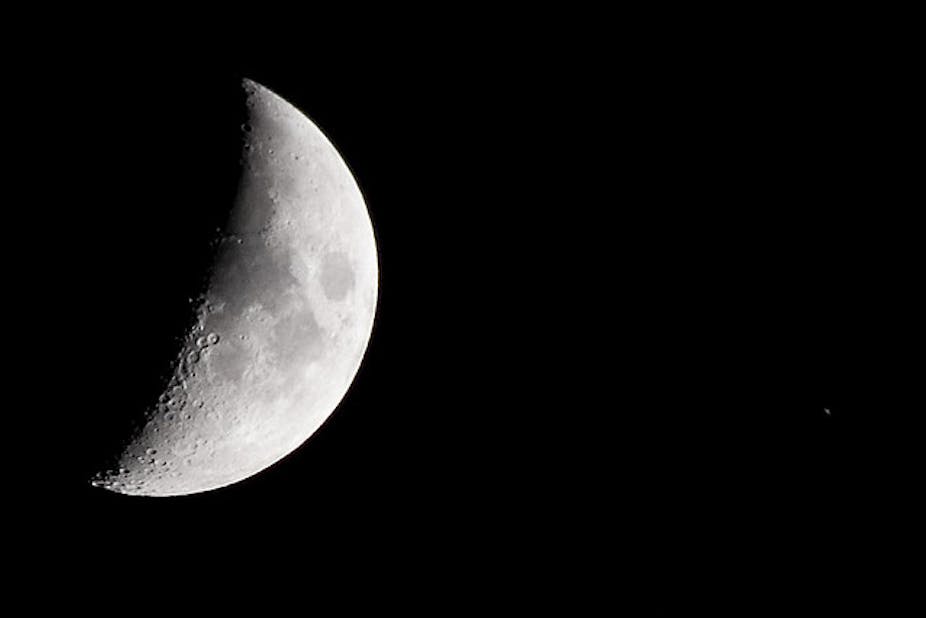Australian researchers have developed a substance that looks and behaves like soil from the moon’s surface and can be mixed with polymers to create ‘lunar concrete’, a finding that may help advance plans to construct safe landing pads and mines on the moon.
Valuable rare earth minerals, hydrogen, oxygen, platinum and the non-radioactive nuclear fusion fuel Helium-3 (He-3) are abundant on the moon. NASA and other space agencies have shown interest in lunar mining but the US is yet to ratify a 1984 treaty that would strictly regulate moon resource extraction.
However, even if moon mining was allowed, lunar conditions are so different to Earthly conditions that new machinery may have to be invented to develop resources found there.
Furthermore, the cost of transporting materials made on Earth would be prohibitive, forcing scientists to come up with ways to build certain equipment using material only found on the moon’s surface.
A research team led by Dr Leonhard Bernold, Associate Professor of Civil Engineering at the University of New South Wales, has created a new lunar soil simulant that closely resembles samples brought back by the Apollo astronauts.
Dr Bernold said such a simulant is essential to test lunar mining systems on Earth and may help researchers develop ways to create a waterless concrete using lunar dust, a component of the moon surface material known as regolith.
“We now know a lot about the mechanical properties of the regolith on the moon so we can create something that simulates it. We have tried to match it as close as we can,” said Dr Bernold.
Dr Bernold’s lunar soil simulant is made up primarily of very fine basalt particles taken from a quarry in Kulnura on the NSW Central Coast.
“These particles are a byproduct of crushing the basalt to serve aggregates for making concrete or asphalt, but are too tiny to be useful and have to be thrown away,” said Dr Bernold.
“On the moon, those small particles are abundant, having being created by small meteorites hitting the lunar surface at high speed over millions of years, thus breaking larger stones down into tiny particles.
As well as providing a substance on which Earthly mining techniques can be tested, the simulant soil can also be mixed with polymers to create a lunar concrete, said Dr Bernold.
"So, for example, we can find ways to create an in-situ resource utilisation material to build a landing pad for rockets on the moon. When rockets are landing, they blow away fine soil and it’s like a sandblaster blasting everything around,” he said, adding that a proper landing pad on the moon would reduce the dangerous sandblaster effect.
“Everything we ship from Earth will cost a lot of money, so we want to do as much as we can from the material that’s available there on the moon in abundance.”
Dr Bernold, who said NASA had shown interest in his findings, is presenting his simulant this week at the Off Earth Mining Forum hosted by UNSW.
Professor Andrew Dempster, Director of the Australian Centre for Space Engineering Research (ACSER) at the University of New South Wales said a lunar soil simulant would help researchers better understand the properties of moon dust.
“The main value in this work is to do with the soils on the moon being so different to the type of soil on the earth and the type of soil most mining machinery is dealing with,” he said.
International treaties and special space laws would be needed to work out who had ownership rights to material mined from the moon, said Dr Dempster.
“I understand there’s an environmental argument around it too but if you were to mine the moon or an asteroid or other planets, there’s not going to be the environmental impact that local mining would have on the local biosphere. It’s a way of mining such that the mining process itself doesn’t produce any negative environmental impact,” he said.
“Obviously, however, you need to produce a lot of energy to go and do it.”
Students working with Dr Bernold are studying methods for harvesting and storing solar heat energy on the moon in a ‘lunar battery’ using materials found on the moon.

